Cerebral Palsy in children
Our skilled pediatric neurologists at Children’s Health℠ provide expert care for children with cerebral palsy, a condition that affects muscle movement and posture, as well as speech and development. Your child receives care from specialists with the experience and training to diagnose and treat all types of conditions and injuries that affect a child’s developing brain. Our team includes doctors and providers from multiple specialties, providing comprehensive care to help your child lead a fulfilling life.
What is cerebral palsy (CP)?
Cerebral palsy (CP) can cause problems with movement, balance and posture. CP affects how the brain communicates with muscles. With CP, the brain can’t properly send messages to muscles about how to move in smooth or well-coordinated ways.
CP can affect other body functions that involve motor skills and muscles, such as breathing, eating, talking and bladder and bowel control. CP is a lifelong condition, but treatment, including medicines, rehabilitation, therapies, and neurosurgery, help manage the symptoms so your child can be as independent as possible.
What are the different types of cerebral palsy (CP)?
Medical experts describe CP by the main type of movement disorder that’s involved. Depending on which areas of the brain are affected, one or more movement disorders can occur:
Stiff muscles (spasticity)
Uncontrollable movements (dyskinesia)
Trouble with balance and coordination (ataxia)
Loose muscles (hypotonia)
The four main types of cerebral palsy are:
Spastic cerebral palsy
The most common type of cerebral palsy is spastic CP, which causes increased muscle tone, stiff muscles and awkward movements. Spastic CP may affect one or more areas of the body, including the legs, arms, trunk and face.
Dyskinetic cerebral palsy
Also called athetoid cerebral palsy, dyskinetic CP causes difficulty with muscle control, causing movements that can be slow and writhing or rapid and jerky. Muscle tone can vary from day to day or even during a single day between too little (hypotonia) or too much (hypertonia) muscle tone.
Ataxic cerebral palsy
Ataxic CP causes problems with balance and coordination. Children with ataxic CP might be unsteady when they walk or have trouble making quick movements or movements that need control, such as writing.
Hypotonic cerebral palsy
Hypotonic CP, also called atonic CP, involves low muscle tone, causing floppiness in the muscles. Hypotonic CP can cause delays in achieving developmental milestones in motor movement, such as holding up the head, sitting up, crawling and walking.
Mixed cerebral palsy
Mixed cerebral palsy involves symptoms of more than one type of cerebral palsy. The most common mixed CP is spastic-dyskinetic CP.
Patterns of cerebral palsy
Within the types, medical experts also describe CP in patterns based on the affected areas of the body. CP patterns include:
Monoplegia,
which affects one limb (arm or leg)
Diplegia,
which affects two limbs, most commonly the legs
Hemiplegia,
which affects one side of the body (left or right), usually the arm more than the leg
Triplegia,
which affects three limbs
Quadriplegia,
which affects both arms and both legs
What are the signs and symptoms of cerebral palsy (CP)?
The signs of cerebral palsy in children vary greatly, depending on the type and pattern of CP, and cerebral palsy symptoms can occur in one or more body systems.
Movement and coordination
Stiff muscles and exaggerated reflexes (spasticity)
Muscle tone that is too stiff or too floppy
Difficulty with balance and coordination
Jerky movements that can't be controlled (tremors)
Slow, writhing movements
Preference for using one side of the body, such as reaching with only one hand or dragging a leg while crawling
Difficulty with walking, such as walking on the toes, unsteady walking or a scissors pattern of walking with the knees crossing
Trouble with fine motor skills, such as buttoning clothes or picking up utensils
Speech and swallowing
Difficulty speaking
Trouble with sucking, chewing or eating
Physical and mental development
Delays in reaching motor skills milestones, such as sitting up or crawling
Learning disabilities
Delayed growth, resulting in smaller size than usually expected
Neurological symptoms
Trouble with vision and changes in eye movements
Pain or difficulty feeling sensations such as touch
Trouble with bladder and bowel control, including constipation and urinary incontinence
Mental health conditions, such as emotional or behavior disorders
How is cerebral palsy (CP) diagnosed?
Our pediatric neurologists usually diagnose cerebral palsy in children between six months to two years old, when they begin to experience delays in meeting developmental milestones.
We do a thorough evaluation of your child, beginning with a physical exam. We’ll ask you about your child’s medical history and what you may have noticed about your child’s movement and development. We’ll also ask about possible risk factors such as premature birth, low birth weight or a difficult delivery.
Our neurologists may order tests to confirm a diagnosis of CP and rule out other possible causes. Your child may need one or more tests, such as:
Neurological exam to evaluate your child's reflexes and motor functions
Brain imaging, such as X-rays, magnetic resonance imaging (MRI)) and computed tomography (CT) scans, to check for signs of damage or development problems in the brain
Electroencephalogram (EEG) to check for signs of seizures
Gait laboratory analysis to evaluate your child’s walking pattern
Genetic testing for neurodevelopmental disorders, which screen for conditions that may run in families
Hearing and vision tests
Metabolic tests, which measure the levels of specific enzymes (such as particular amino acids, vitamins or carbohydrates) needed to maintain normal body functions
What causes cerebral palsy (CP) in children?
Cerebral palsy results from damage to a baby’s developing brain, which causes problems with a baby’s brain development. These issues usually happen before a baby is born, but they can occur at birth or in early infancy. Often the cause isn't known. Some factors that can lead to changes in brain development before or shortly after birth include:
Low birth weight, especially less than 3 pounds, 5 ounces (1.5 kg)
Extremely premature birth, especially before 32 weeks of pregnancy
Multiple births, such as twins or triplets
Maternal infections that affect an unborn baby
Stroke, which interrupts blood supply to the developing brain
Bleeding into the brain while a baby is still in the womb or as a newborn
Infant infections that cause swelling in or around the brain
Traumatic head injury to an infant, such as from a vehicle accident, fall or physical trauma
Gene changes that cause genetic conditions or differences in brain development
Lack of oxygen to the brain related to difficult labor or delivery, although this cause is less common than previously thought
How is cerebral palsy (CP) treated?
At Children’s Health, our pediatric neurologists and neurosurgeons manage care for children who have cerebral palsy. We work with doctors, therapists and other providers from multiple specialties across Children’s Health to provide your child with comprehensive care. Your child can get all their care with our team, from medications to rehab therapy to advanced neurosurgery.
We work closely with you and your child to maximize their abilities at home, in school and in other activities, with a focus on your child’s health and independence. Although cerebral palsy is a lifelong condition that has no cure, a wide variety of treatments can improve your child’s health, well-being and mobility.
Depending on the type of cerebral palsy, how symptoms are affecting your child, their health needs and other factors, your child may benefit from one or more treatments. Children’s Health offers the newest, most advanced treatments for cerebral palsy, and we’ll design a personalized treatment plan for your child.
Nonsurgical treatments for cerebral palsy
Our team will design a personalized treatment plan for your child, with treatment options such as:
Medications: Medications can help manage cerebral palsy symptoms, such as muscle spasms and stiffness, seizures, pain and mental health conditions. Medicines for CP may be pills or injections.
Physical therapy: Our physical therapists show your child exercises to improve muscle strength, balance, coordination, flexibility and mobility.
Occupational therapy: We work with your child to help them learn ways to do their daily activities at home, in school and in other activities. Our occupational therapists can help your child gain independence by using adaptive equipment such as walkers and wheelchairs.
Speech-language therapy: Our speech-language pathologists help your child with speaking, communication, swallowing and feeding.
Orthotics: Leg braces and splints help with walking by stretching muscles or supporting the position of a joint. Our rehabilitation therapists can design custom braces for your child.
Neurodevelopmental support: Children who have CP may have a higher risk of attention deficit/hyperactivity disorder, autism spectrum disorder, learning disabilities and other developmental disabilities. Our neuropsychologists and psychiatrists provide counseling and medications to manage these conditions and support your child’s development.
Neurosurgery for cerebral palsy
Some children need high doses of muscle relaxants for severe spasticity, but higher doses of these oral medications can cause unwanted side effects or may not be effective over the long term. These children may benefit from neurosurgery to help relieve spasticity and improve their mobility.At Children’s Health, our skilled neurosurgeons are experienced in procedures to treat spasticity in children who have CP. We offer:
Baclofen pump: Baclofen is a muscle relaxant taken orally (by mouth). This medication suppresses nerve signals that trigger muscle spasms and helps restore normal nerve signals for improved muscle movements. Our neurosurgeons perform a procedure to implant a pump device that delivers baclofen directly into the cerebrospinal fluid. A baclofen pump effectively controls spasticity without the side effects of oral medications, helping children avoid the side effects of oral baclofen.
Selective dorsal rhizotomy (SDR): This minimally invasive procedure can permanently reduce spasticity in the legs, helping children with CP learn to walk independently. Our neurosurgeons make a cut over the spine to access the nerve roots that carry messages from the spinal cord to the leg muscles. Using a surgical microscope, the neurosurgeons separate and stimulate individual nerve roots. By measuring how leg muscles respond to stimulation, our team identifies the specific roots that cause the most spasticity. Our neurosurgeons cut those nerve roots and leave others intact. SDR helps the brain and spinal cord develop new, healthy nerve pathways to leg muscles. The child can then improve muscle strength and control, range of motion, posture and gait (walking) patterns through intensive physical therapy after SDR.
Cerebral palsy doctors and providers
Our pediatric neurologists and neurosurgeons specialize in the latest treatments and neurosurgical procedures for cerebral palsy and other conditions, infections and injuries affecting a child’s brain, spinal cord and nerves. With advanced training and years of experience, our teams have extensive expertise in diagnosing and treating even the most complex conditions.
 Michael Dowling, MDPediatric Neurologist
Michael Dowling, MDPediatric Neurologist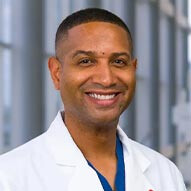 Romaine Johnson, MDPediatric Otolaryngologist (ENT)
Romaine Johnson, MDPediatric Otolaryngologist (ENT)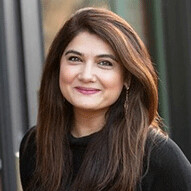 Saima Kayani, MDPediatric Neurologist
Saima Kayani, MDPediatric Neurologist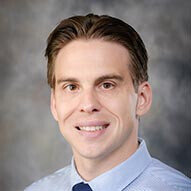 Eric Remster, MDPediatric Neurologist
Eric Remster, MDPediatric Neurologist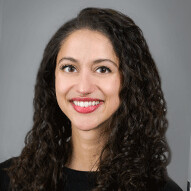 Lauren Sanchez, MDPediatric Neurologist
Lauren Sanchez, MDPediatric Neurologist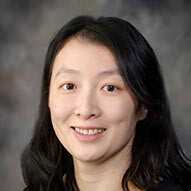 Cynthia Wang, MDPediatric Neurologist
Cynthia Wang, MDPediatric Neurologist
Frequently Asked Questions
What's the long-term outlook for cerebral palsy?
How will cerebral palsy affect my child?
Can cerebral palsy be prevented?
Children's Health Resources
American Academy of Pediatrics, HealthyChildren.org: Cerebral Palsy in Children
National Institutes of Health, National Institute of Neurological Disorders and Stroke: Cerebral Palsy
National Institutes of Health, National Library of Medicine: Cerebral Palsy